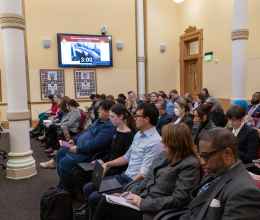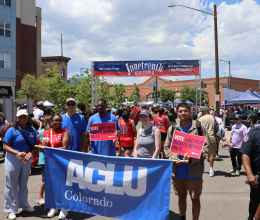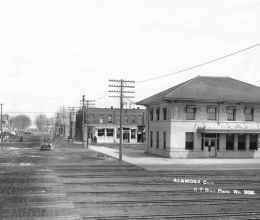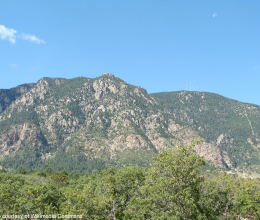
As a child, the March on Washington was my first realization of “the movement” — something that every adult I knew was talking about and engaged in. It was a seminal moment for the American Civil Rights Movement when more than 250,000 people convened on the Mall in Washington D.C. to show nationwide support for Black Americans to receive the same rights and freedoms as white Americans.
It was also a seminal moment for me. Saturday marks the 58th anniversary of the March, part of the pathway that undergirds my more than 30 years as a social justice change agent and led me to become the first African-American executive director of the American Civil Liberties Union of Colorado.
There is still much work to be done toward the quest for equal rights and justice for all. The burdens are heavy but not impossible to lay down. May we continue to be inspired by the marches that came before us, the marches of today, and build a movement where peace can finally prevail.
Growing up in Atlanta during the 1960s, the March was more than a televised event. My neighbors in Collier Heights, a Black community on the National Historic Register, were actively engaged in the planning and execution of the March. Among them were Rev. and Mrs. Martin Luther King, Sr. and Leroy Johnson, the first Black senator in Georgia elected to the state legislature. Every adult I knew was sharing their time, talents, and tides to the movement, including my parents.
Leading up to the March, multi-faith groups and women’s groups were communicating logistics and providing food and water for those traveling. In 1963 in the South, Black people could not use public restrooms unless there was a sign designating it a colored restroom. They could not come through the front door to be served in restaurants. Most Black people brought their own food rather than face the humiliating experience of getting takeout from the back. My mother, a registered nurse, and my father, an electrical contractor, helped plan and raise money for the delegation from Atlanta, then boarded one of the dozens of busses to D.C. themselves.
Fifty years later, I would follow in their footsteps.
History has shaped the story of the March as an epic peak of the movement, that converted hearts and minds. But the timing and violent aftermath are often glossed over. The March was not an overnight matter, it had been in the works for decades. A. Phillip Randolph, president of the Brotherhood of Pullman Porters, proposed a march in 1941 to force President Franklin D. Roosevelt to integrate the American armed forces. He stated, “Power is the active principle only of the organized masses, the masses united for a definite purpose.” When the order was signed by President Roosevelt, plans for that march were shelved.
More than 20 years later, the idea of a march resurfaced after the election of President John Kennedy and the introduction of the Civil Rights Act. Congressmen from the South responded with a filibuster to keep it from going to a vote. The leaders of six organizations fighting for the equal treatment of Black people, known as “The Big Six”, came together and looked to Randolph’s blueprint.
The Kennedy administration, skittish that violence might occur, shifted from supporting the effort to attempting to control it. In the weeks following the March, there were violent reactions and acts by white people across the south, and on the morning of September 15, 1963, the 16th Street Baptist Church in Birmingham Alabama was bombed, killing four young girls arriving for Sunday school. Months later, President Kennedy was assassinated in Dallas. After much pain, loss and shifting of public will, the Civil Rights Act of 1964 was finally signed by President Johnson on July 2, 1964.
Decades later, as the executive vice president of the National Center for Civil and Human Rights and inspired by social justice advocate Stan Salett’s vision, I helped organize a group of college students to attend the 50th anniversary of the March. Their mission was to find people attending the 2013 March who were also there in 1963. The students were recruited and given a crash course on video interviewing techniques, and on the evening of August 23, 2013, like my parents and many others, boarded a bus in Atlanta bound for D.C. They collected more than 100 first-person stories.
That experience sparked my interest in identifying themes from the March and how they may be applied as lessons to the movements of today. Here are two lessons learned:
Among his final words, Big Six member John Lewis said, “When historians pick up their pens to write the story of the 21st century, let them say that it was your generation who laid down the heavy burdens of hate at last and that peace finally triumphed over violence, aggression and war.”
Onward.
Deborah Richardson is the executive director of ACLU of Colorado.
Originally published by The Denver Post: https://www.denverpost.com/2021/08/23/opinion-i-watched-my-parents-help-organize-the-march-on-washington-58-years-ago-and-the-movement-still-burns-inside-me-for-social-change/


